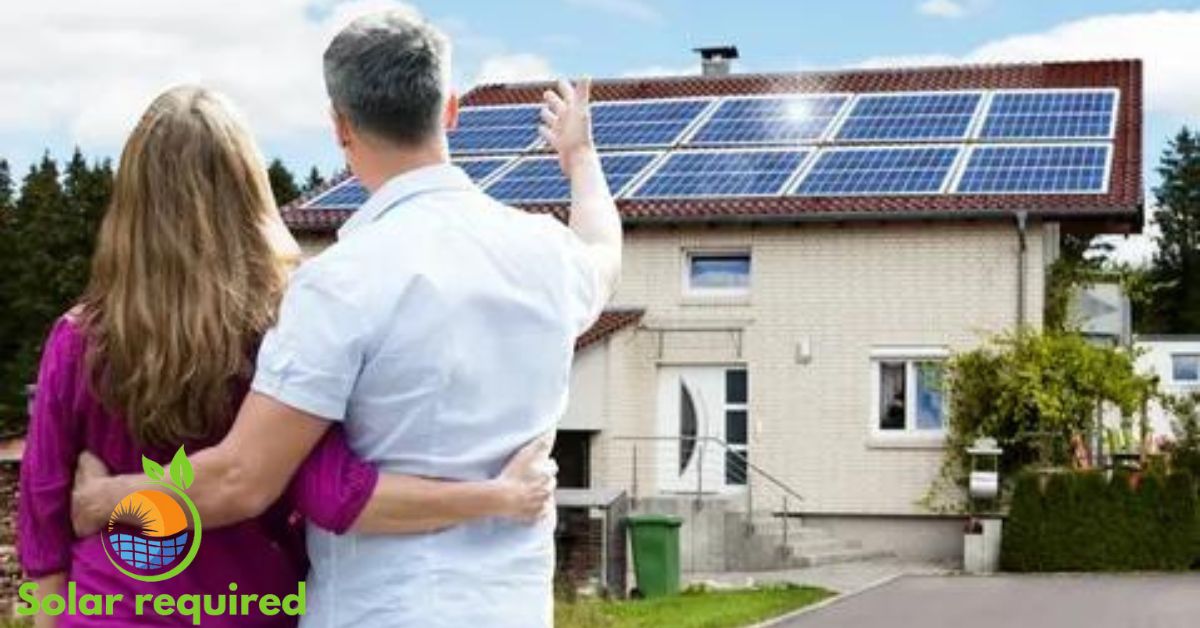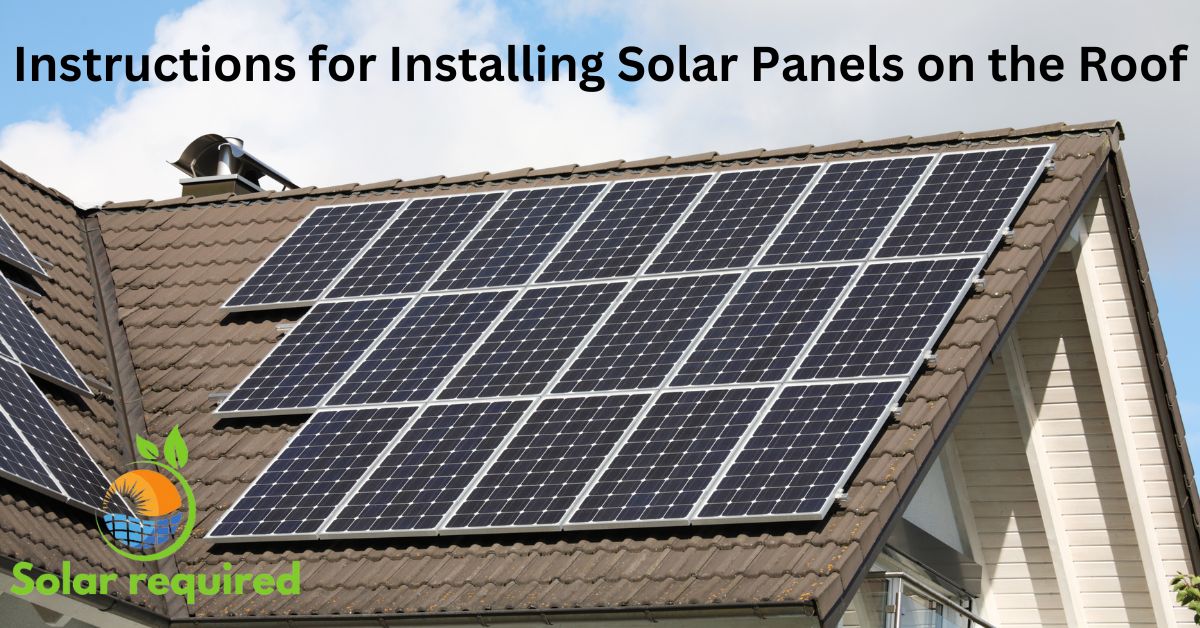Solar power is becoming a top choice for clean energy as the world moves to renewables. Solar panels have many benefits, but one important factor is often missed: proper spacing. This can greatly affect your system’s performance. This article looks at why spacing between solar panels matters. We’ll also discuss setting up your panels for the best energy output.
Understanding Solar Panel Spacing
Regarding solar panel installations, spacing refers to the gap between individual solar panels. This spacing isn’t just for looks or ease. It’s crucial to get the most out of your solar energy system and make it last longer. There are two primary types of spacing to consider:
Vertical spacing: The gap between the rows of panels, typically determined by the tilt angle of the panels.
Horizontal spacing: The gap between panels within a single row affects how much sunlight each panel can receive.
Proper spacing allows each panel to receive enough sunlight. It also helps with heat dissipation and airflow, which are important for efficiency.
Recent Post: What are Qcells Solar Panels?
How Solar Panel Spacing Affects Energy Output
The relationship between solar panel spacing and energy output is direct. If panels are placed too close together, it can lead to several issues that reduce efficiency. On the other hand, if the panels are too far apart, you might waste valuable space, resulting in lower overall energy production. Here’s how improper spacing can affect your solar system:
Too little spacing: The risk of shading increases when panels are too close together. Shading occurs when one panel blocks sunlight from reaching the others, which can significantly reduce the entire system’s efficiency. Also, overcrowding blocks airflow, leading to overheating of the panels, which lowers their energy output even more.

Too much spacing: While this may seem like a better option, excessive spacing leads to wasted space and inefficient use of available sunlight. The panels are too spread out, reducing the number of panels in an area and lowering energy production.
To find the right balance, space solar panels for good sunlight and less shade. Also, make sure there’s enough airflow to keep them cool.
Key Factors Influencing Solar Panel Spacing
Several factors influence the ideal spacing for your solar panels. These factors can change based on the installation type. This includes residential, commercial, or industrial setups. They also depend on geographic location and environmental conditions. Here are the key factors to consider:
1. Tilt Angle
The angle at which solar panels are tilted plays a huge role in determining how much sunlight they can capture. To avoid shading, a steeper tilt angle generally requires more vertical spacing between panels. A shallower tilt needs less spacing but might capture less energy in winter. This is because the sun is lower in the sky during those months.
2. Panel Size
Larger solar panels will require more space than smaller ones. When you install a solar array, consider the panel size. This affects how far apart you place them. Proper spacing helps each panel get the most sunlight.
3. Shading
Nearby trees, buildings, or other structures can create shading that blocks sunlight from reaching your panels. To avoid this, factoring in the surrounding environment when determining panel spacing is crucial. Spacing panels well and placing them right can lower shading and boost energy efficiency.
4. Roof Size
The available roof space will directly influence the number of panels you can install. For residential rooftops, limited space affects panel spacing. Careful planning is needed to balance the number of panels and their spacing. In commercial installations, space isn’t a big problem. So, you can optimize spacing to boost energy production.
How can you connect solar panels to inverters when installing solar panels?
The Role of Solar Panel Spacing in System Efficiency
Proper spacing isn’t just about fitting more panels in a space. It’s also about keeping the system running efficiently over time. Here’s how adequate spacing impacts overall system performance:
Heat Dissipation: Solar panels generate heat during operation, and when installed too closely together, this heat can accumulate, reducing their efficiency. Proper spacing lets air flow between the panels, which helps cool the system and keeps it running at its best.
Airflow: Adequate airflow is essential for maintaining the health of solar panels. When spaced too closely, panels can trap warm air, causing them to overheat and potentially malfunction. Proper spacing ensures that air circulates the panels, improving performance.
Panel-to-Panel Shading: When panels are too close together, their shadows can overlap, reducing the energy production of multiple panels. Proper spacing stops shading and ensures each panel gets plenty of sunlight all day.

Calculating Optimal Solar Panel Spacing
Calculating the correct solar panel spacing can involve some basic math, but it’s worth the effort. The optimal distance depends on panel size, tilt angle, and geographic location. Here’s a basic guide to get started:
1. Determine the panel’s size (length and width).
2. Measure the tilt angle to determine how much vertical spacing you’ll need to prevent shading.
3. Factor in seasonal sunlight changes as the sun’s position in the sky shifts throughout the year. This may require adjusting your panel layout seasonally.
Many solar panel installation companies use software tools to design the optimal layout for solar arrays. These tools consider your location, roof size, and solar panel features. They then suggest the best spacing for maximum energy output.
Case Studies: Real-Life Examples of Solar Panel Spacing
Consider a few real-world examples where optimal solar panel spacing has led to enhanced performance:
Residential Installation in Arizona: A homeowner installed solar panels with proper spacing on their roof, considering the intense summer heat. This allowed for better ventilation and heat dissipation, improving overall efficiency by 15%.
Commercial Solar Farm in California: In a large solar farm, the panels were spaced based on the tilt angle and the seasonal position of the sun. By optimizing the layout, the farm saw a 20% increase in energy output compared to the initial design.
Best Practices for Solar Panel Spacing
When setting up solar panels, it’s important to ensure they are spaced correctly. The right amount of space between panels helps them work more efficiently, receive enough sunlight, and stay cool. Let’s discuss how to space your panels to get the most energy out of your system.
1. Use Solar Design Tools or Get Help from an Expert
Finding the best spacing for your solar panels can be tricky. Many factors, such as your roof size, panel angle, and location, influence this. Using special solar design software or working with an expert can help. These tools consider all the factors and suggest the best layout to maximize energy production.
2. Adjust the Tilt Angle for Better Sunlight
The tilt angle is how steep or flat your solar panels are. The steeper the panels, the more space you’ll need between rows to avoid shading. On the other hand, flatter panels can have less space between them but won’t work as well in the winter when the sun is lower in the sky.
Here’s how the tilt angle affects the panels:
- In summer, a flat angle works best.
- In winter, a steeper angle is better.
Adjust your panels’ angle depending on the season for maximum sunlight.
3. Consider the size of your panels
Larger solar panels need more space. When you use bigger panels, you have to ensure enough room between them so they don’t block each other’s sunlight. Always take the size of your panels into account when planning the spacing.
4. Watch Out for Shading
Shading is one of the biggest enemies of solar panels. If something like a tree, building, or even another panel blocks the sunlight, your panels won’t produce as much energy. To avoid shading:
- Don’t put panels where trees or buildings could cast shadows on them.
- Consider how the sun moves throughout the year since shadows change with the seasons.
Ensure your panels are placed in spots that won’t be shaded by objects around them, especially during peak sunlight hours.
5. Ensure enough airflow for cooling
Solar panels get hot when they work. If they are positioned too closely, the heat becomes trapped, and the panels operate with reduced efficiency. Proper spacing helps the heat escape, keeping the panels cooler and more efficient. Aim for a few inches of space under the panels to allow air to circulate.
6. Consider the size and shape of your roof.
Not all roofs are the same, and if your roof is small or has a steep slope, you may need to adjust the panel spacing. For small rooftops, you’ll want to be careful not to space panels too far apart, as you might not be able to fit enough panels for good energy production. You can afford to space panels out more for better efficiency for larger roofs.
How to Safely Disconnect Battery from Solar Panels.
7. Make Seasonal Adjustments (If Possible)
Adjust your panel layout depending on the season. In the summer, when the sun is high in the sky, you may not need as much space between rows. In the winter, when the sun is lower, you’ll want to ensure the panels are spaced further apart to avoid shading.
FAQs
1. Why is solar panel spacing important for energy production?
Proper solar panel spacing ensures each panel gets enough sunlight and allows for airflow to prevent overheating. It boosts energy output by cutting down shading and improving heat flow, making your solar system more efficient overall.
2. How do I calculate the right spacing for my solar panels?
The optimal spacing depends on factors like the size of your panels, the tilt angle, and the location of your roof. Use solar design software or talk to a professional installer. They can help you find the best layout for getting the most sunlight and least shading.
3. What happens if I space my solar panels too closely?
If panels are spaced too closely, they may shade each other, reducing energy production. Also, not enough airflow can cause the panels to overheat, lowering their efficiency and shortening their lifespan.
4. Can I adjust the spacing between my panels for different seasons?
Adjusting the spacing based on the seasons can help improve energy production. When the sun is lower in winter, you may need more space between panels to avoid shading. In summer, you can reduce the spacing slightly when the sun is higher.
5. How can I avoid shading from trees or other buildings?
To avoid shading, place solar panels where they are not affected by nearby trees, buildings, or other obstructions. When placing the panels, think about the sun’s path each day and year. This helps them get direct sunlight.
Conclusion
To sum up, correctly spacing solar panels is key. It boosts energy output and keeps your solar system efficient. To improve performance, consider panel size, tilt angle, shading, and airflow during installation. Solar design tools or consulting experts can help you find the best layout for your needs.
Taking the time to adjust panel spacing for seasonal changes can further enhance energy production. Ultimately, the right spacing leads to a more efficient, cost-effective, and sustainable solar energy system.


